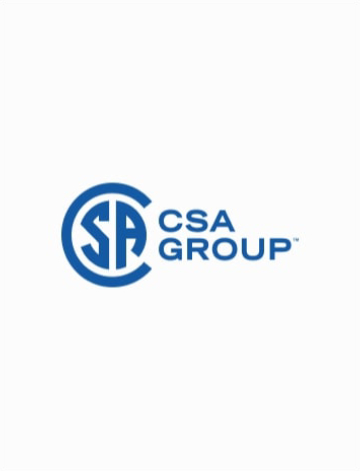Preface
This is the first edition of CSA Z314.0, Medical device reprocessing - General requirements. It is the core Standard in a series of CSA Group Standards dealing with the safe and effective sterilization of medical supplies and equipment.
Scope
1.1
This Standard is intended to form the basis of a QMS within a health care setting for the purpose of providing safe, reliable reprocessing of reusable medical devices and is designed to be used with the CSA Z314 series of Standards addressing specific aspects of medical device reprocessing.
A comprehensive QMS can be achieved when this Standard is used in combination with related subject specific standard(s) in the CSA Z314 series:
a) CSA Z314.1;
b) CSA Z314.3;
c) CAN/CSA-Z314.8;
d) CSA Z314.9;
e) CSA Z314.10.1;
f) CSA Z314.10.2;
g) CSA Z314.14;
h) CSA Z314.15;
i) CAN/CSA-Z314.22; and
j) CSA Z314.23
Note: Some content in this Standard will be duplicated in other standards in the CSA Z314 series until future editions can be developed and redundancies removed. This Standard supersedes duplicate content of other standards in the CSA Z314 series.
1.2
As part of a QMS, this Standard includes requirements for:
a) quality management, including
i) policies and procedures;
ii) documentation;
iii) roles and responsibilities;
iv) management review;
v) personnel qualifications and training; and
vi) adverse event management (e.g., recalls);
b) occupational health and safety;
c) evaluation and purchase of reprocessing equipment and reusable medical devices;
d) infection prevention and control;
e) work areas and equipment;
f) environmental conditions; and
g) utilities (e.g., power supply, water, and steam quality).
1.3
This Standard applies to health care settings or providers where medical device reprocessing occurs, including but not limited to,
a) all acute care hospitals;
b) trauma centres;
c) emergency care facilities;
d) medical clinics with or without overnight stay or observation;
e) endoscopy centres;
f) laser eye clinics;
g) outpatient surgical services;
h) cosmetic surgical offices;
i) dental general and surgical facilities;
j) other office surgical facilities;
k) general physician offices (with and without treatment spaces);
l) stand-alone laboratory facilities;
m) diagnostic imaging centres;
n) nursing homes;
o) long-term care facilities;
p) assisted-living facilities;
q) mental health facilities;
r) forensic facilities;
s) rehabilitation facilities;
t) additional services facilities;
u) chronic care facilities;
v) group homes;
w) hospice care facilities;
x) stand-alone dialysis clinics;
y) ambulatory clinics;
z) walk-in health clinics;
aa) physiotherapy clinics;
ab) pediatric clinics;
ac) public health clinics;
ad) adult daycare centres;
ae) third-party reprocessors; and
af) educational settings.
1.4
This Standard does not apply to
a) single-use/disposable medical devices; and
Note: Information concerning safety, technology, cost/benefit, and legal issues involving the reuse of such medical devices is found in such publications as the Canadian Healthcare Association (1996), ECRI Institute (1997), and the Canadian Agency for Drugs and Technologies in Health (CADTH 2011).
b) medical devices that have been used with patients who are known or suspected to have Creutzfeldt-Jakob Disease (CJD) or prion-related diseases.
Note: See Public Health Agency of Canada (formerly Health Canada) Classic Creutzfeldt-Jakob Disease in Canada - Quick Reference Guide (2007) and Classic Creutzfeldt-Jakob Disease in Canada (2002).
1.5
In this Standard, shall is used to express a requirement, i.e., a provision that the user is obliged to satisfy in order to comply with the standard; should is used to express a recommendation or that which is advised but not required; may is used to express an option or that which is permissible within the limits of the standard; and can is used to express possibility or capability.
Notes accompanying clauses do not include requirements or alternative requirements; the purpose of a note accompanying a clause is to separate from the text explanatory or informative material.
Notes to tables and figures are considered part of the table or figure and may be written as requirements.
Annexes are designated normative (mandatory) or informative (non-mandatory) to define their application.

